
We’ve all played them. Those games that we say, “That game was pretty cool,” and someone else– maybe a friend, maybe a professional reviewer– instead said “I hated that game” or, “That game is mediocre and flawed.” Perhaps we even understand why the person in question hates the game or understand the flaws the review points out.
Still, sometimes one person’s junk is another person’s treasure. Below are five games I have played over the years that met with generally middling to poor reviews. In some cases I even had a love-hate relationship with them. But all of them managed to endear themselves to me in some way.
Have your own imperfects? Feel free to add them in the comments section below.
Flying Warriors (NES)
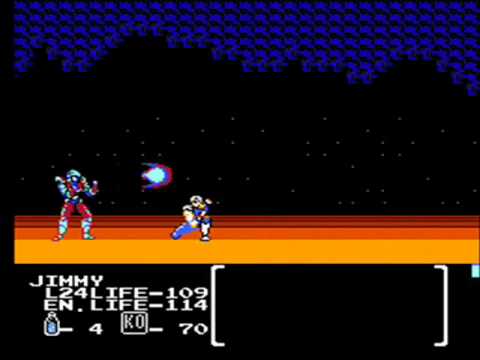
The game in a nutshell: Take control of a group of transforming superheroes (think Mighty Morphin Power Rangers) and fight off weird aliens.
Why it was flawed: The game is actually a mashup of two different games, and the result is just odd. For one, the game (unlike most NES games) pretends to have a plot, but it’s completely nonsensical. Collect some orbs while battling against aliens, then… compete in a fighting tournament that randomly morphs (apparently unbeknownst to the audience) against monsters on another plane of existence? The game has also no fewer than three different modes of combat: overworld, an odd close quarters fighting system, and a rare turn-based system against select bosses. All three of the combat systems felt either unrefined or wonky.
Why I liked it anyway: Any kid who grew up watching Voltron, Ultraman, or, later on, the Power Rangers, had to see Flying Warriors as the realization of a dream. (Flying Warriors actually predated the Power Rangers by a couple of years.) Sure, it wasn’t the ideal dream – in addition to the above flaws, you could only control one character at a time – but it was the closest that existed to that point, and I’m not sure any game since has come much closer to realizing the archetype.
Trivia I got from Wikipedia: “It is a mixture of two Family Computer video games in the Hiryū no Ken franchise: Hiryu no Ken II: Dragon no Tsubasa and Hiryu no Ken III: 5 Nin no Ryuu Senshi. It implements ideas and elements from both games, thus making it hard to tell which of the two is officially its Japanese version.”
Spider-Man and the X-Men: Arcade’s Revenge (SNES)
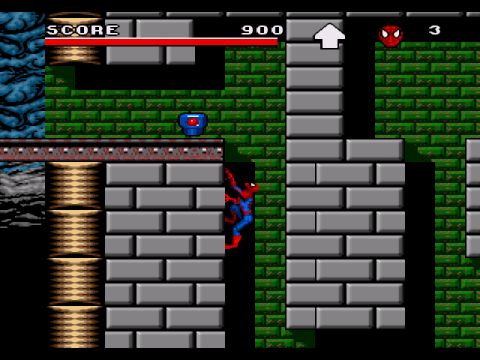
The game in a nutshell: The evil Arcade has captured Spider-Man and the X-Men and thrown them into a gauntlet of dangers designed to kill them. The player takes control of the superheroes, one by one, as they battle their way out.
Why it was flawed: This is maybe one of the most impossibly hard games I’ve ever played. Some of the levels were doable, including the ones involving Spider-Man and Storm and one of the levels later on where all of the X-Men converge on Arcade’s Revenge. Others, though, were ridiculous, including a Gambit level that was nigh-impassable without the help of the save state powers of an emulator or some other voodoo. For those who endured to the end, your reward was an anticlimactic letdown that lasted about fifteen seconds.
Why I liked it anyway: In between bouts of wanting to throw the controller at my 19” tube television, the game had some genuine moments of fun. For one, it was a Marvel comics fan smorgasbord. Spider-Man, Cyclops, Storm, Gambit, and Wolverine were all playable, and in classic, old-school garb. Enemies included the likes of Apocalypse, Juggernaut, Rhino, Selene, the Sentinels, and, of course, Arcade. There are some cool payoff moments, such as a more human level about two-thirds of the way through the game where the difficulty backs off a bit and you can really strut the character’s stuff. Oh, and the groovy soundtrack is unexpectedly complex and, at times, completely amazing.
Trivia I got from Wikipedia: According to one of the developers, the game’s development was fraught with problems: “Spider-Man and [the] X-Men started going horribly wrong and Acclaim were screaming at us and threatening litigation, and we ended up with three teams on this one game.”
Baten Kaitos: Eternal Wings and the Lost Ocean (GCN)
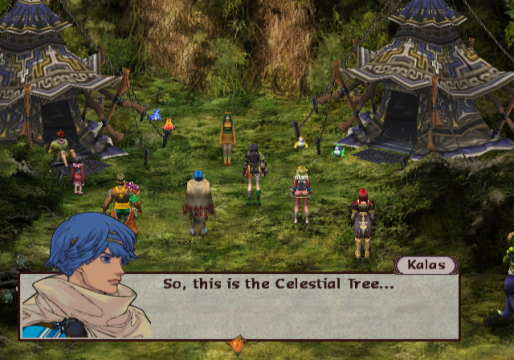
The game in a nutshell: On a cluster of floating islands in the sky, a young one-winged boy named Kalas is caught in a web of conspiracy and danger. The game player is a guardian spirit, with whom the Kalas intermittently addresses by breaking the fourth wall.
Why it was flawed: the game was co-developed by tri-Crescendo (Eternal Sonata, Star Ocean: Till the End of Time) and Monolith Soft (Xenosaga, Xenoblade Chronicles) and employed a card-based system for just about everything in the game. The card system could be a lot of fun, but it also was imbalanced, with certain cards (notably some defense cards) not only often useless, but potentially cumbersome. The bigger flaw, though, came in Namco’s (now Namco-Bandai) lowball approach to the English voice work, which populated the world with acting on par with a bad high school production.
Why I liked it anyway: Baten Kaitos (along with Tales of Symphonia) was a massive injection to an RPG-starved GameCube. The game was beautiful in a lot of ways, with wonderful rendered scenes, breathtaking artwork, catchy music, and a couple of mind-blowing mid-game plot twists that kept you guessing. The notion of the player being a guardian spirit made for a really interesting narrative framework, especially in conjuction with the plot twists. The card system also had its moments; when it worked, it was a blast to play. Best of all, it led to a prequel, Baten Kaitos Origins, which remedied nearly all of the first game’s flaws and stands as one of one GameCube’s best.
Trivia I got from Wikipedia: “The title, Baten Kaitos comes from Arabic meaning ‘belly of the sea monster/whale’ and is also the name of the star Zeta Ceti.”
Geist (GCN)
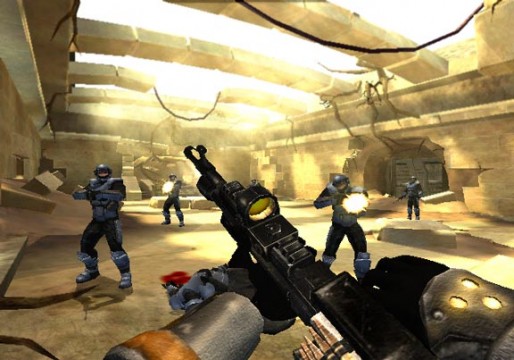
The game in a nutshell: You play a man who, through a series of mishaps, is detached from a body and is left as a ghost that can possess and control various other characters.
Why it was flawed: From the very start it is clear this game is less than complete. The graphics vary between decent and meh – along with occasional framerate stutter – and the game as a whole feels unpolished. The controls can be a real bear, both when shooting and sometimes as a ghost. This comes to a head during some of the boss fights; I remember taking the better part of an evening and the following morning trying to surmount the endboss. I had to take a break because the controls were so wonky that my hand had cramped up and I needed to recover overnight to try again.
Why I liked it anyway: Few games that I’m aware of have tackled a premise quite like this, and at times it really works. Those first moments when you lose your body are pretty surreal, as are the experiences of possessing various people throughout the experience. For much of the game, things alternate between a near-frozen world of possession and a normal world seen through the eyes of the inhabited, and despite the technical flaws the experience is novel. I thought the characters in general were developed well, all things considered, and it was rewarding to meet back up with those characters later in the game. The game’s plot evolves, too, which amps up the tension considerably as things move toward the end.
Trivia I got from Wikipedia: “Most of the voices done in the game were radio personalities from WTKS-FM 104.1 based out of Orlando, Florida, including members of The Shannon Burke Show and The Monsters in the Morning.”
Opoona (Wii)
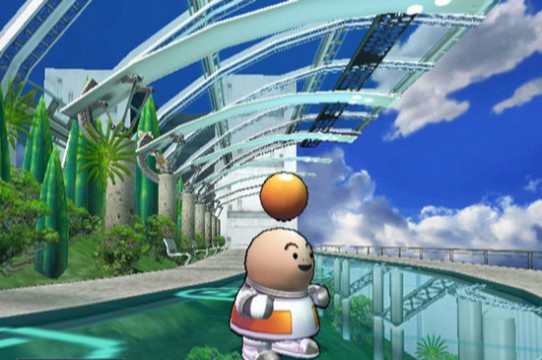
The game in a nutshell: After a mysterious explosion, a young alien boy is stranded on a planet, separated from the rest of his family. He must reunite with his siblings and defeat the evil that has plagued the planet.
Why it was flawed: Whoever Koei tapped for localization did a job that would make even the overworked translators of the 1980s NES era hang their heads in shame. The translation is sloppy, with awkward wording, scattered grammatical and mechanical mistakes, and an overall lack of polish. There are even a couple of instances where the wording was so bad that suggested the wrong answer on a dialogue tree.
Why I liked it anyway: I’ve never played a game quite like this. How many titles involve playing as a boy who can throw a giant ball that floats above his head, while cruising through a world delivering pizzas and making friends? Unlike Flying Warriors, this kitchen sink approach feels natural; Opoona masterfully takes several different ideas (friendships, combat, jobs) and forges them into an ecosystem of game mechanics where one of them directly or indirectly relates to the others. This whole recipe is then tossed onto a quirky, cel-shaded wonder of a planet with a healthy batch of trippy, partially orchestrated music. Developer ArtePiazza even customized the controls so they could be played with just one hand using the nunchuck.
Trivia I got from Wikipedia: “Opoona suffered low sales upon its release in Japan. The game was released on the same day as Nintendo’s Super Mario Galaxy, a title that Artepiazza and Koei did not foresee as competition being in a different genre.”
The game in a nutshell: Take control of a group of transforming superheroes (think Mighty Morphin Power Rangers) and fight off weird aliens.
Why it was flawed: The game is actually a mashup of two different games, and the result is just odd. For one, the game (unlike most NES games) pretends to have a plot, but it’s completely nonsensical. Collect some orbs while battling against aliens, then… compete in a fighting tournament that randomly morphs (apparently unbeknownst to the audience) against monsters on another plane of existence? The game has also no fewer than three different modes of combat: overworld, an odd close quarters fighting system, and a rare turn-based system against select bosses. All three of the combat systems felt either unrefined or wonky.
Why I liked it anyway: Any kid who grew up watching Voltron, Ultraman, or, later on, the Power Rangers, had to see Flying Warriors as the realization of a dream. (Flying Warriors actually predated the Power Rangers by a couple of years.) Sure, it wasn’t the ideal dream – in addition to the above flaws, you could only control one character at a time – but it was the closest that existed to that point, and I’m not sure any game since has come much closer to realizing the archetype.
Trivia I got from Wikipedia: “It is a mixture of two Family Computer video games in the Hiryū no Ken franchise: Hiryu no Ken II: Dragon no Tsubasa and Hiryu no Ken III: 5 Nin no Ryuu Senshi. It implements ideas and elements from both games, thus making it hard to tell which of the two is officially its Japanese version.”
Spider-Man and the X-Men: Arcade’s Revenge (SNES)
The game in a nutshell: The evil Arcade has captured Spider-Man and the X-Men and thrown them into a gauntlet of dangers designed to kill them. The player takes control of the superheroes, one by one, as they battle their way out.
Why it was flawed: This is maybe one of the most impossibly hard games I’ve ever played. Some of the levels were doable, including the ones involving Spider-Man and Storm and one of the levels later on where all of the X-Men converge on Arcade’s Revenge. Others, though, were ridiculous, including a Gambit level that was nigh-impassable without the help of the save state powers of an emulator or some other voodoo. For those who endured to the end, your reward was an anticlimactic letdown that lasted about fifteen seconds.
Why I liked it anyway: In between bouts of wanting to throw the controller at my 19” tube television, the game had some genuine moments of fun. For one, it was a Marvel comics fan smorgasbord. Spider-Man, Cyclops, Storm, Gambit, and Wolverine were all playable, and in classic, old-school garb. Enemies included the likes of Apocalypse, Juggernaut, Rhino, Selene, the Sentinels, and, of course, Arcade. There are some cool payoff moments, such as a more human level about two-thirds of the way through the game where the difficulty backs off a bit and you can really strut the character’s stuff. Oh, and the groovy music is unexpectedly complex and, at times, completely amazing.
Trivia I got from Wikipedia: According to one of the developers, the game’s development was fraught with problems: “Spider-Man and [the] X-Men started going horribly wrong and Acclaim were screaming at us and threatening litigation, and we ended up with three teams on this one game.”
Baten Kaitos: Eternal Wings and the Lost Ocean (GCN)
The game in a nutshell: On a cluster of floating islands in the sky, a young one-winged boy named Kalas is caught in a web of conspiracy and danger. The game player is a guardian spirit, with whom the Kalas intermittently addresses by breaking the fourth wall.
Why it was flawed: the game was co-developed by tri-Crescendo (Eternal Sonata, Star Ocean: Till the End of Time) and Monolith Soft (Xenosaga, Xenoblade Chronicles) and employed a card-based system for just about everything in the game. The card system could be a lot of fun, but it also was imbalanced, with certain cards (notably some defense cards) not only often useless, but potentially cumbersome. The bigger flaw, though, came in Namco’s (now Namco-Bandai) lowball approach to the English voice work, which populated the world with acting on par with a bad high school production.
Why I liked it anyway: Baten Kaitos (along with Tales of Symphonia) was a massive injection to an RPG-starved GameCube. The game was beautiful in a lot of ways, with wonderful rendered scenes, breathtaking artwork, trippy music, and a couple of massive mid-game plot twists that kept you guessing. The notion of the player being a guardian spirit made for a really interesting narrative framework, especially in conjuction with the plot twists. The card system also had its moments; when it worked, it was a blast to play. Best of all, it led to a prequel, Baten Kaitos Origins, which remedied nearly all of the first game’s flaws and stands as one of one GameCube’s best.
Trivia I got from Wikipedia: “The title, Baten Kaitos comes from Arabic meaning ‘belly of the sea monster/whale’ and is also the name of the star Zeta Ceti.”
Geist (GCN)
The game in a nutshell: You play a man who, through a series of mishaps, is detached from a body and is left as a ghost that can possess and control various other characters.
Why it was flawed: From the very start it is clear this game is less than complete. The graphics vary between decent and meh – along with occasional framerate stutter – and the shooter controls are very clearly unpolished. The controls can be a real bear, both when shooting and sometimes as a ghost. This comes to a head during some of the boss fights. I remember taking the better part of an evening and the following morning trying to surmount the endboss. I had to take a break because the controls were so wonky that my hand had cramped up and I needed to recover overnight to try again.
Why I liked it anyway: Few games that I’m aware of have tackled a premise quite like this, and at times it really works. Those first moments when you lose your body are pretty surreal, as are the experiences of possessing various people throughout the experience. For much of the game, things alternate between a near-frozen world of possession and a normal world seen through the eyes of the inhabited, and despite the technical flaws the experience is novel. I thought the characters in general were developed well, all things considered, and it was rewarding to meet back up with those characters later in the game. The game’s plot evolves, too, which amps up the tension considerably as things move toward the end.
Trivia I got from Wikipedia: “Most of the voices done in the game were radio personalities from WTKS-FM 104.1 based out of Orlando, Florida, including members of The Shannon Burke Show and The Monsters in the Morning.”
Opoona (Wii)
The game in a nutshell: after a mysterious explosion, a young alien boy is stranded on a planet, separated from the rest of his family. He must reunite with his siblings and defeat the evil that has plagued the planet.
Why it was flawed: whoever Koei tapped for localization did a job that would make even the overworked translators of the 1980s NES era hang their heads in shame. The translation is sloppy, with awkward wording, scattered grammatical and mechanical mistakes, and an overall lack of polish. There are even a couple of instances where the wording was so bad that suggested the wrong answer on a dialogue tree.
Why I liked it anyway: I’ve never played a game quite like this. How many titles involve playing as a boy who can throw a giant ball that floats above his head, while cruising through a world delivering pizzas and making friends? Unlike Flying Warriors, this kitchen sink approach feels natural; Opoona masterfully takes several different ideas (friendships, combat, jobs) and forges them into an ecosystem of game mechanics where one of them directly or indirectly relates to the others. This whole recipe is then tossed onto a quirky, cel-shaded wonder of a planet with a healthy batch of trippy, partially orchestrated music. Developer ArtePiazza even customized the controls so they could be played with just one hand using the nunchuck.
Trivia I got from Wikipedia: “Opoona suffered low sales upon its release in Japan. The game was released on the same day as Nintendo’s Super Mario Galaxy, a title that Artepiazza and Koei did not foresee as competition being in a different genre.”




 ShareThis
ShareThis







Arcade’s Revenge! That landed between the X-Men cartoon starting but before the Spider-Man cartoon debuted, so it was one of my first exposures to the wall-crawler. Doesn’t really hold up, but it does have a place in my heart. Also, I beat Apocalypse once, and I’m damn proud of that.